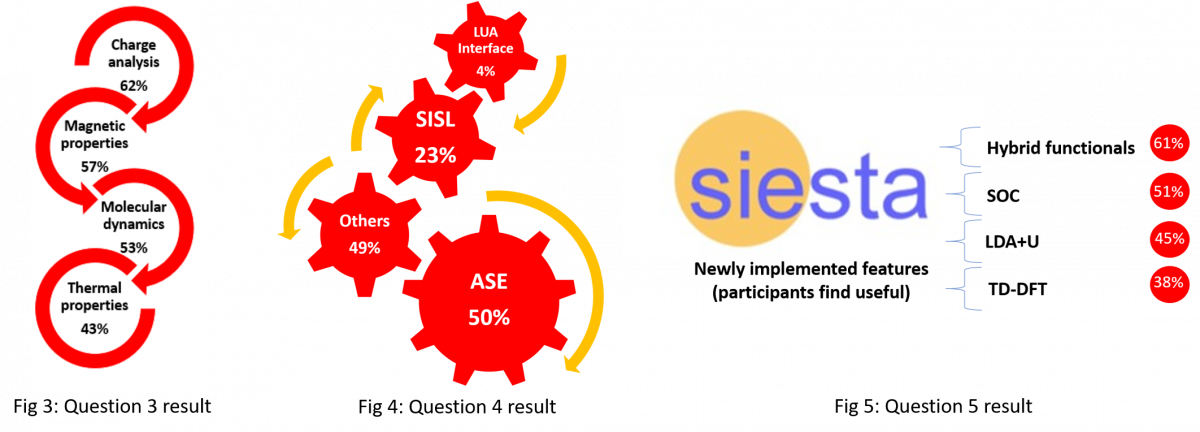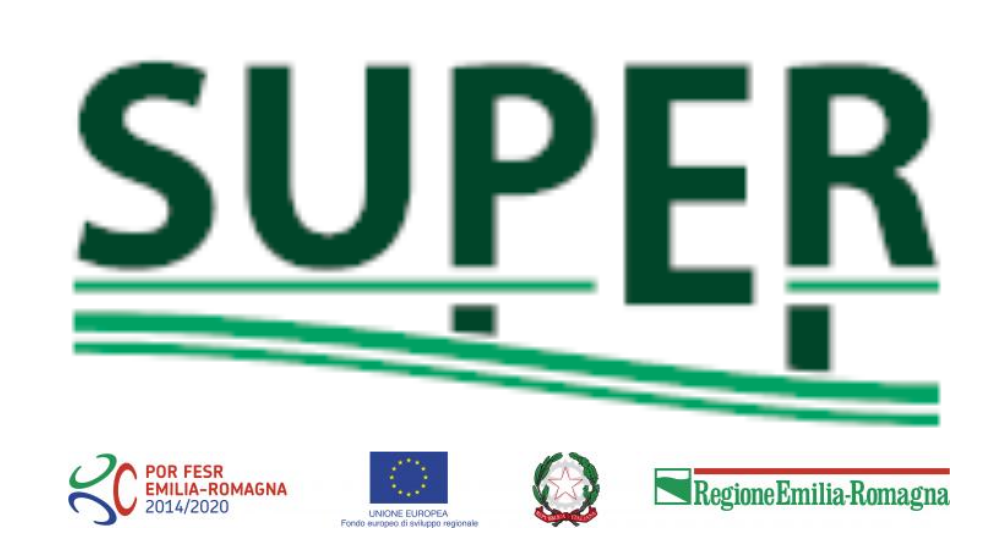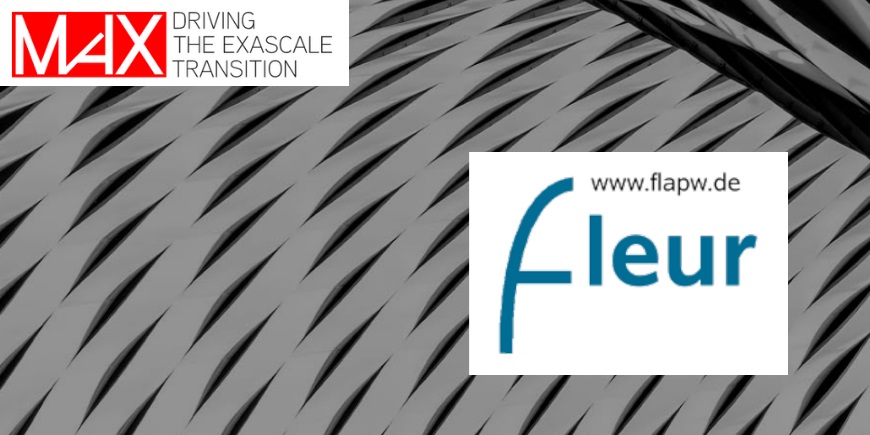SIESTA Webinar - Highlights and Insights
The 5th webinar of the MaX series on Flagship codes entitled "New developments in SIESTA for high-performance materials simulations" was held last 22nd September, focusing on preparing materials-simulation codes for the upcoming extreme-scale HPC systems. This baseline efficiency has been extended, alongside the domain of applicability of SIESTA, with the addition of new features.
For over two decades, SIESTA has enabled the treatment of large systems with first-principles electronic structure methods, bringing new opportunities to many disciplines. This webinar was significantly relevant, not only to the scientific community and its end-users, in providing:
- A broad view of the SIESTA code, methodology and main developments for HPC and scalability;
- An accurate glimpse of Solver strategies for performance and features and the ELSI initiative to integrate solver libraries.
- An overview of the TranSIESTA module for transport simulations.
- A snapshot of the performance optimisation and new functionalities of TranSIESTA.
- The spectrum of user support to help both the MaX and SIESTA communities.
The webinar was moderated by Emilio Artacho, Physics Researcher leading the theory group at Nanogune (ES) and professor at the University of Cambridge (UK), who also provided an exhaustive overview of the main MaX's advancements and key-results.
Alberto Garcia, Computational Scientist at the Institut de Ciència de Materials de Barcelona (ICMAB-CSIS), and one of the most active contributors to the development of the SIESTA code. He introduced the new developments in the area of electronic structure solvers, notably the incorporation of an interface to the ELSI library, which has enabled significant performance enhancement, including GPU acceleration.
Pablo Ordejón, MaX WP5 leader, leader of the Theory and Simulation Group and currently director at the Catalan Institute of Nanoscience and Nanotechnology (ICN2). He presented the overview of the TranSIESTA built-in module, which implements a formalism based on non-equilibrium Green's functions, and the latest improvements in its functionality (in particular multi-electrode support) and optimisation.
Nick Papior, HPC Specialist at the Technical University of Denmark under the DTU Computing Center, who tackled the subject of the performance optimisation and new functionalities of TranSIESTA.
Last presentation was given by Mónica García-Mota, Scientific Director at SIMUNE, who highlighted the efforts being made in enhancing user support within the SIESTA ecosystem, an area of great relevance given the extra complexity that emerges when considering the variety of novel architectures and features.
Key takeaways
When it comes to extending the reach across a wider pool of stakeholders, the MaX webinar was very well received, totalling 151 online participants (out of 213 registered participants) and accruing 55 live questions coming from an highly engaged audience. Participants were seamlessly spread acrossu EU countries and beyond, coming from 33 countries: 17 EU Member States and 16 Non-EU/global. For the EU, Spain was by far the most represented country (17), followed by Italy (9), the United Kingdom (8), Germany (7) and France (4).
During the webinar, participants have been given the chance to answer to interactive "live poll-questions" to better understand their familiarity with both SIESTA code and MaX. The following charts display the main outcomes pulled out from the surveys (average responses from 83 out of 151 attendees).
In this webinar, we checked which environment the participants are using in running SIESTA. It shows that 94% are using Linux, 6% Windows and 5% are running on macOS (information from poll question 1).
In addition, 39% of the respondents are usually employing 24<x>72 CPUs, 37% of which use <24 CPUs, 14% with >120 CPUs and 10% with 72<x>120 CPUs (questions 2).

Most of the attendees are familiar with ASE (50%), SISL (23%), LUA Interface (4%) and other tools (49%) (question 3).
We also assessed which items are of interest to them.62% are interested in Charge analysis, 57% in Magnetic properties, 53% in Molecular dynamics and 43% in Thermal properties (question 4).
After the discussion, we also asked the participants which of the newly implemented features they find more useful? 61% of the participants find Hybrid functionals useful, 51% SOC, 45% LDA+U and 38% TD-DFT (question 5).

Highlights
SIESTA (Spanish Initiative for Electronic Simulations with Thousands of Atoms) is both a method and its computer program implementation, to perform efficient electronic structure calculations and ab initio molecular dynamics simulations of molecules and solids. SIESTA’s efficiency stems from the use of strictly localized basis sets and from the implementation of linear-scaling algorithms which can be applied to suitable systems. A very important feature of the code is that its accuracy and cost can be tuned in a wide range, from quick exploratory calculations to highly accurate simulations matching the quality of other approaches, such as plane-wave and all-electron methods.
The new developments of SIESTA is the reengineering of codes, and MaX is at the heart of bringing electronic structure codes towards exascale computing, but SIESTA team is not doing it in the old way as they are changing the paradigm.
The old way is called "Monolithic electronic structure code", which the whole code is being delivered as one single unity compiled and used based on basic fundamental libraries such as ScaLAPACK and FFT.
In the new paradigm, the electronic structure driver is part of a much more modular entity in which they are dealing with different level and nuclear structure and dynamics drivers (MD, i-PI, ASE), workflow, tools, and they have heavy duty electronic structure tasks that are being shared, developed and reengineered in common basis in different codes in collaboration with MaX, CECAM and SIMUNE.
To learn more the new features and functionalities of the latest developments in SIESTA, click here to watch the recorded webinar and download the speakers' slides.



